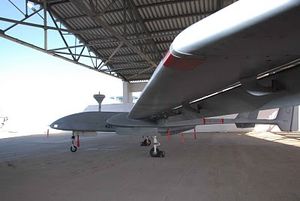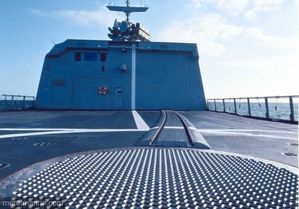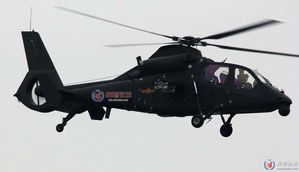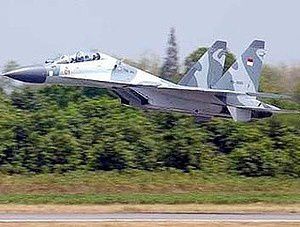17 octobre Par Edouard Pflimlin, chercheur associé à l’IRIS, et Yann Rozec, étudiant en Master « Défense, sécurité et gestion
de crise » à IRIS Sup’. - affaires-strategiques.info
Le renforcement historique des forces sous-marines japonaises est récent même si le Japon a toujours entretenu une force significative, surtout sur le plan
qualitatif. La raison principale est soulignée dans les « Lignes directrices du programme de défense nationale », approuvées le 17 décembre 2010 par le conseil de sécurité et le Cabinet
japonais(1) : « La Chine ne cesse d’augmenter ses dépenses de défense. La Chine modernise largement et rapidement ses forces militaires, principalement sa force nucléaire et de missiles,
ainsi que la marine et la force aérienne, et renforce sa capacité étendue de projection de puissance. En outre, la Chine a étendu et intensifié ses activités maritimes dans les eaux environnantes
[du Japon]. Ces tendances, ainsi que le manque de transparence sur les forces militaires de la Chine et sa politique de sécurité, sont sources de préoccupation pour la communauté régionale et
mondiale. »
C’est ainsi la menace chinoise qui est clairement identifiée. Menace qui reste la source des principales préoccupations comme le montre le dernier Livre
Blanc(2) de la défense japonaise. Face à celle-ci, Tokyo a décidé une réorganisation géographique de ses forces, réorientées vers le Sud-Ouest de l’Archipel nippon, le plus exposé à
d’éventuelles attaques chinoises, qu’une révision et l’équipement de ses forces avec un accent mis notamment sur la marine. Le nombre d’unités de destroyers (48 navires) doit passer de 5 à 4 et
elles doivent être plus mobiles. Des destroyers-porte hélicoptères (DDH), « qui ressemblent à des petits porte-avions », doivent également être acquis(3). C’est dans ce
contexte que le nombre de sous-marins japonais doit passer de 16 à 22 en quelques années. Une hausse « historique ». En effet, en 1976, les « Lignes directrices » avaient fixé
à 18 unités (y compris deux bâtiments destinés à l’entraînement) le nombre de sous-marins, tout en les renouvelant très fréquemment à partir de l’année fiscale 1978(4). Actuellement la classe
Soryu de sous-marins diesel – le premier bâtiment est entré en service en mars 2009(5) - est la plus moderne à disposition du Japon. Ces bâtiments sont à la fois, plus silencieux, plus
manœuvrables et endurants que la précédente classe. « Ils ont le plus gros déplacement en charge que n’importe lequel des précédents sous-marins japonais depuis la Seconde Guerre
mondiale(6) ». Une nouvelle classe est à l’étude(7).
Selon le « programme de défense à moyen terme »(8) (2011-2015) adopté le 17 décembre 2010, cinq sous-marins seront acquis sur la période. Les missions
sont de renseignement, de surveillance et de reconnaissance (ISR) dans les eaux territoriales et autour de l’Archipel. Elles doivent participer à la surveillance des voies de communication
maritimes si vitales pour le Japon et son économie.
Ces forces sous-marines s’intègrent dans la coopération militaire croissante avec les Etats-Unis, soulignait notamment le New York Times en février
2011(9).
A cet approfondissement de l’alliance avec les Etats-Unis, s’ajoute le rapprochement avec les alliés de ceux-ci. « Afin d’éliminer les facteurs
déstabilisants et continuer de stabiliser la région Asie-Pacifique, le Japon va promouvoir les dialogues bilatéraux et multilatéraux de sécurité, la coopération et les échanges de la défense et
de la formation et des exercices communs à plusieurs niveaux, et de promouvoir la création et le renforcement de l’architecture de coopération régionale », indique le « Programme
de défense à moyen terme 2011-2015 ».
Un des moyens de cette coopération bilatérale avec d’autres pays de la région est la coopération en matière d’industrie de défense. « Le gouvernement
japonais a [en effet] annoncé mardi 27 décembre 2011 qu’il avait décidé d’alléger l’interdiction sur les exportations d’armements qu’il s’était imposée il y a plus de quarante ans, ouvrant la
voie à la participation de firmes nippones à des projets d’armement avec l’étranger(10) ». Un des domaines d’expertise du Japon est celui des sous-marins. Le gouvernement de l’Australie
est d’autant plus intéressé que des manœuvres navales conjointes (Australie, Etats-Unis et Japon), impliquant des sous-marins, ont déjà eu lieu(11).
Une coopération qui s’est renforcée depuis les années 2000 mais qui a des fondements solides. En effet, depuis la fin de la Seconde Guerre mondiale qui les a vus
s’opposer, le Japon et l’Australie partagent des valeurs communes et un fort attachement pour l’alliance avec les Etats-Unis, comme l’a rappelé M. Carr, ministre de la Défense australien
lors d’une rencontre entre les ministres des Affaires étrangères et les ministres de la Défense des deux pays, en Australie le 14 septembre 2012(12).
Le dialogue trilatéral en matière de défense, permet de promouvoir la sécurité et la stabilité dans la région Asie-Pacifique. L’Australie souhaite par ailleurs,
renforcer son rôle d’agent stabilisateur dans la région comme elle l’a montré, notamment en fournissant l’essentiel de la force internationale Interfet, au Timor Est en 1999, ainsi qu’en
mai 2006(13).
Cette proximité sur la scène internationale se trouve renforcée par un nouveau volet, une coopération industrielle en matière de défense à travers le développement
de la nouvelle classe de sous-marins de la Royal Australian Navy (RAN). En effet, après avoir évalué différentes hypothèses, comme l’achat de sous-marins nucléaires de classe Astute ou
Los Angeles, l’Australie s’est tournée vers le Japon et ses sous-marins de classe Soryu, qui représenteraient un saut qualitatif important pour la RAN comparativement à
l’actuelle classe Collins(14). D’un tonnage de 3051 tonnes(t) en surface et 3353t en plongée, ce programme, entré en service depuis 1996, a vu son développement et sa carrière
opérationnelle émaillés de nombreux problèmes. La dernière date de l’exercice RIMPAC 2012(15), et pose la question de son retrait du service ainsi que de la nécessité de disposer rapidement d’un
successeur. Ce projet ambitieux, évalué à 36 milliards de dollars, ce qui en fait le programme de défense australien le plus coûteux à ce jour, sera développé à partir de 2013 à Adelaïde, dans le
Sud de l’Australie. Le cahier des charges définit un sous-marin de 4000t environ, ce qui élimine la concurrence européenne puisque le tonnage du Scorpène français est de 2060t et celui
du U212A allemand de 1830t. Il doit être doté d’une capacité à mener une lutte anti-navire et anti-sous-marine, tout en permettant le déploiement de forces spéciales et le renseignement.
Un rayon d’action long est préconisé afin de contrer la Chine, dont la politique de réarmement, notamment naval avec l’entrée en service de 31 sous-marins(16) entre 1990 et 2005, inquiète(17),
dans un contexte de relatif déclin de la puissance sous-marine américaine. En effet, le nombre d’unités américaines devrait se réduire de 30 à 27 d’ici à 2025(18), ce qui encourage une
coopération plus étroite avec les alliés des Etats-Unis pour le contrôle de la région.
L’accroissement de la puissance militaire navale chinoise entraîne une course aux armements, et plus particulièrement des sous-marins, en Asie du Sud-Est. Le choix
de ce type d’arme s’explique par sa capacité à jouer un rôle de déni d’accès et assurer la défense des détroits et des côtes, même pour des marines relativement faibles. Ainsi Singapour dispose
de la flotte sous-marine la plus avancée après la Chine et le Japon, avec 5 sous-marins ; la Malaisie a acquis 2 sous-marins français de type Scorpène, parmi les plus modernes et
les plus silencieux ; le Vietnam envisage de se doter ex nihilo de 6 sous-marins de classe Kilo d’ici 2025 ; et l’Indonésie entend faire passer sa flotte de 2 unités
actuelles à 12 ! Par ailleurs, la Corée du Sud qui dispose de 12 sous-marins entend porter sa flotte à 27 d’ici 2020(19).
Au-delà de l’intérêt du Japon pour ce programme australien, la France, alliée des États-Unis, et qui dispose d’intérêts économiques évidents dans la région, devrait
s’interroger sur la manière dont elle pourrait profiter du boom de ce marché de défense émergent. A l’heure où les Etats-Unis opèrent un basculement de leur politique vers l’Asie et le Pacifique,
Paris devrait définir son ambition dans la région. 
(1) Lire les "Lignes directrices du programme de défense
nationale"
(2) « Menaces chinoise et nord-coréenne : Tokyo mise sur le renforcement de l’alliance
américaine », Edouard Pflimlin, Affaires stratégiques, IRIS, 9 août 2012,
(3) « With Its Eye on China, Japan Builds Up Military », Martin Fackler, The New
York Times, 28 février 2011
(4) « Japan
Boosts Its Submarine Fleet », Bradley Perrett, 22 octobre 2010, Aviation week
(5) SS Soryu Class Submarines, Japan, Naval Technology
(6) Soryu class. Diesel-powered attack submarine
(7) Cf Revue DSI hors-série n°11
(8) http://www.mod.go.jp/e/d_act/d_poli...
(9) « With Its Eye on China, Japan Builds Up Military », Martin Fackler, op cit
(10) « Tournant historique pour la défense japonaise et son industrie », Edouard Pflimlin,
Affaires stratégiques, IRIS, 30 décembre 2011. Lire aussi : « L’industrie de défense
japonaise : quelles perspectives ? », Edouard Pflimlin, Affaires Stratégiques, IRIS, 5 juin 2012
(11) « Le Japon, les Etats-Unis et l’Australie vont organiser des manœuvres
conjointes en juin », La voix de la Russie, 24 mai 2012
(12) Ministre des Affaires étrangères australien, M. Carr
(13) http://www.diplomatie.gouv.fr/fr/pa...
(14) http://www.nti.org/media/pdfs/colli...
(15) http://www.defenseindustrydaily.com...
(16) Andrew S. Erickson and Lyle J. Goldstein, China’s Future Nuclear Submarine Force : Insights from Chinese Writings, Naval War College Review , Vol. 60, No. 1 (Winter 2007), p. 55.
(17) John Kerin, Gillard bows to U.S. on Submarines, Australian Financial Review, 24 November 2011, www.lexisnexis.com ; Jonathan Pearlman, "$46b Sub Plan : Aussies Dive into Debate ; Issue is whether Fleet is for Territorial Defence or to help
U.S. in the Region," The Straits Times, 14 July 2012, www.lexisnexis.com.
(18) http://s3.amazonaws.com/thf_media/2..., p.4
(19) International Institute for Strategic Studies, The Military Balance 2009, p. 397, and GlobalSecurity.org, “South Korea Navy” February 3, 2009, at(January 26, 2010).

























